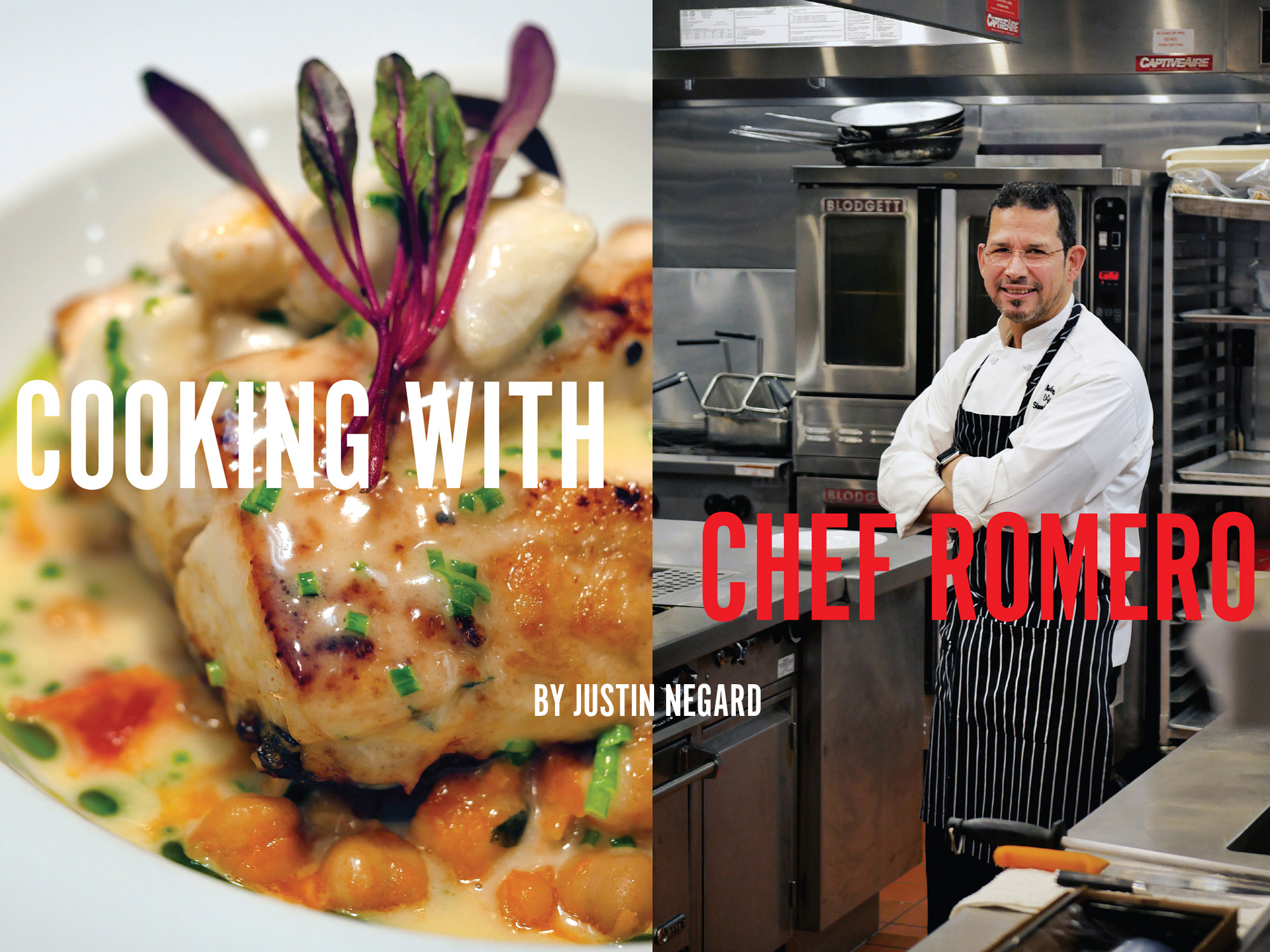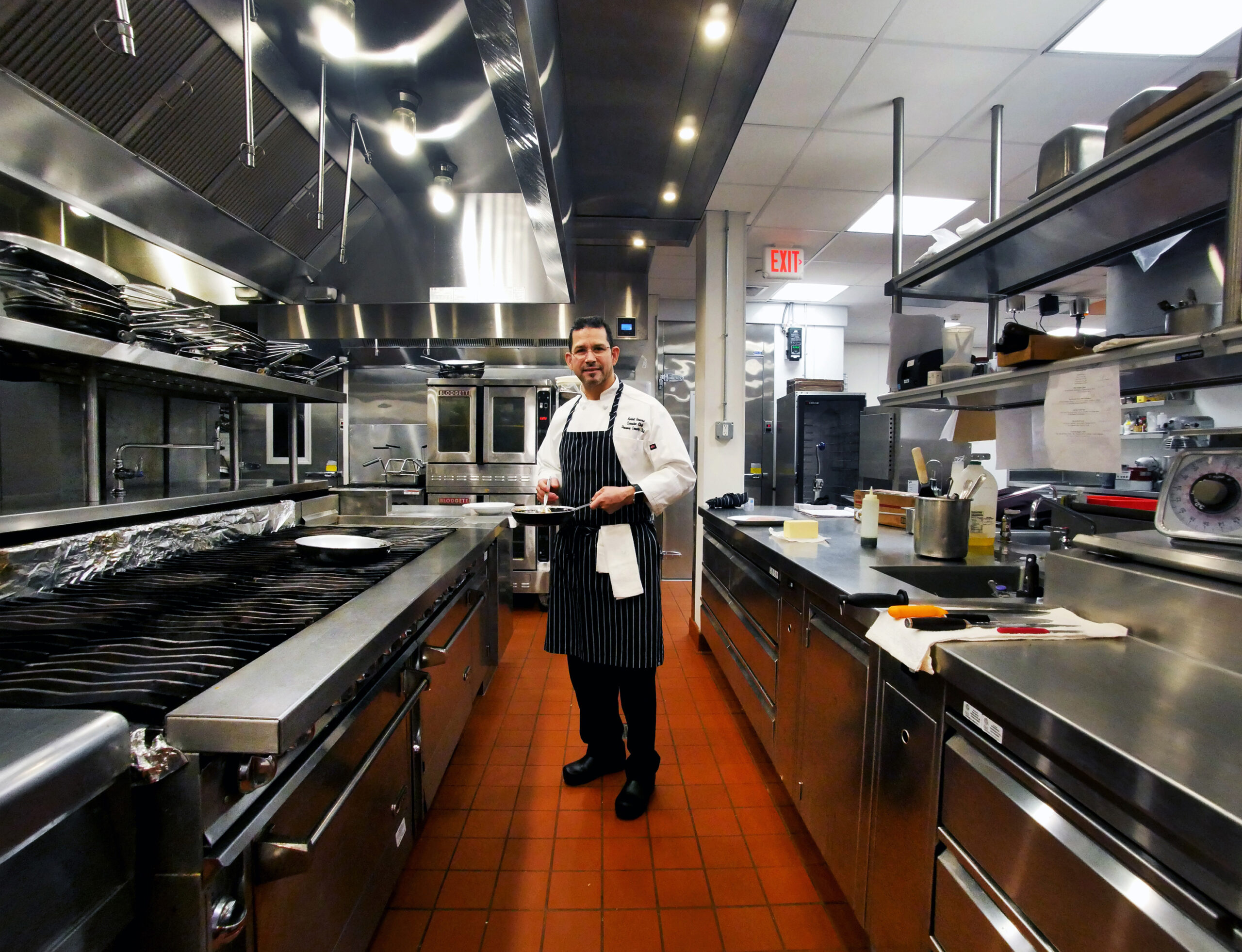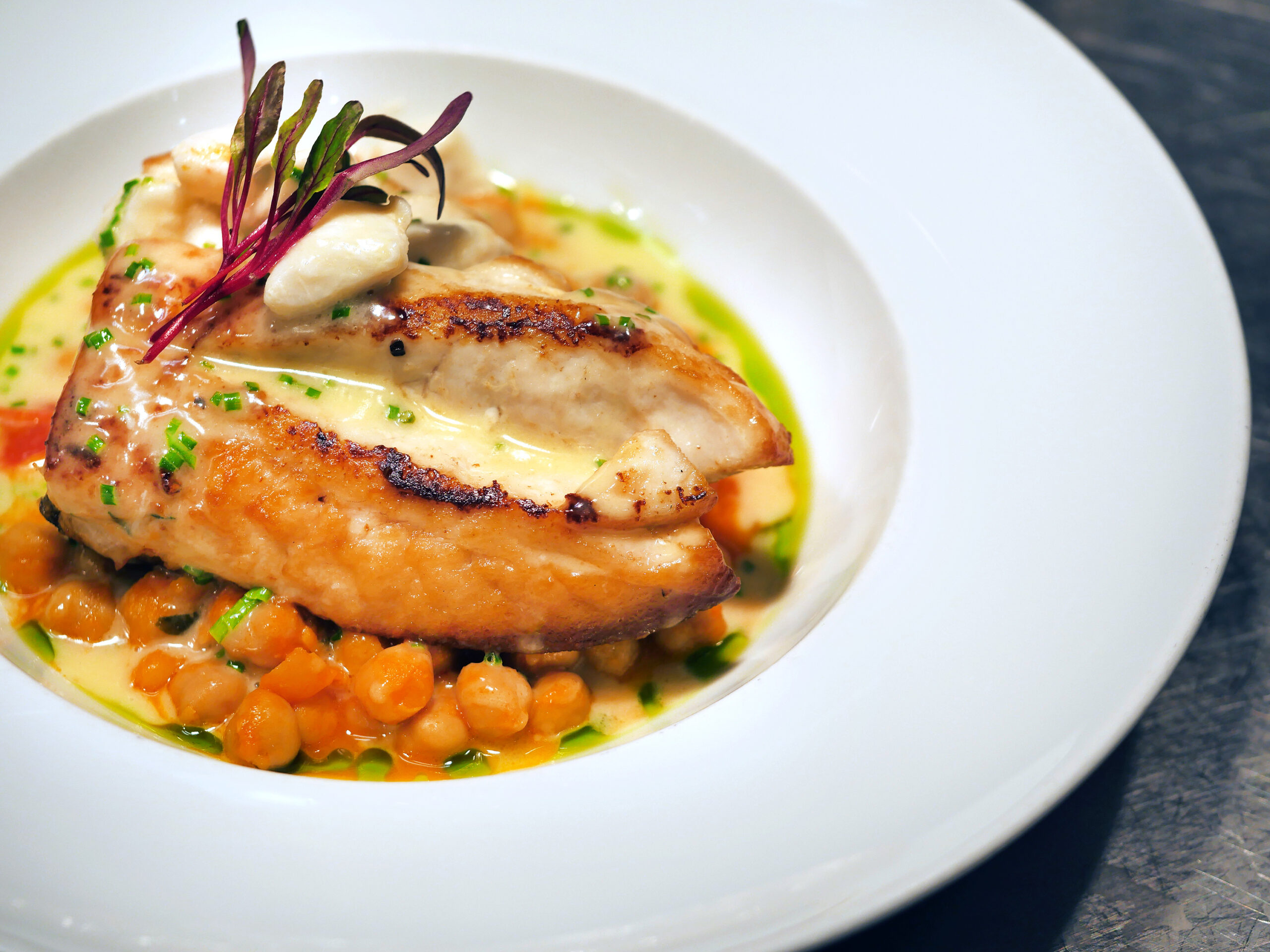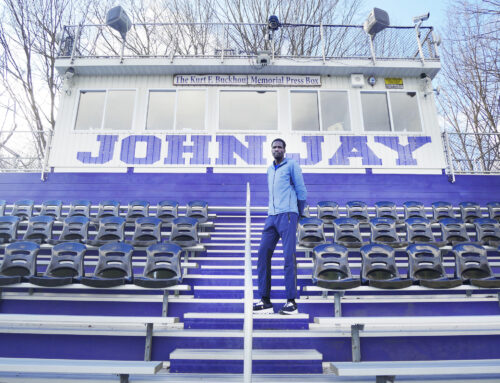“Let me tell you about artichokes,” he said to me. His voice lowered. His eyes darted to the left and right while he leaned in closer to the table. “They are very difficult to cook properly,” he said. “Removing the leaves, handling the heart, the hairs, it all must be done just right. This is a vegetable they test you with in culinary school. That’s why it’s so sad when a customer leaves any of it behind. All that work wasted.”
For Chef Anibal Romero, cooking isn’t a job. It’s his heart. To cook something with the right technique, the proper ingredients, and perfect amount of love is to do something that really matters. “Food is a universal language. It really has the power to connect people. And so when you see an empty plate come back into the kitchen, you already know that your guest enjoyed the food. It’s a great feeling.”
This connection to food has been with him for his entire life. “The first dish I ever made was eggs and potatoes,” he remembered with a sparkle in his eye. “I was just a boy. It was pretty good.”
Romero’s story has been a truly impressive one, making the journey as a young man from Guatemala to becoming an executive chef in some of the best restaurants in New York. “I started working in kitchens at an early age. I was quick, I learned fast. My supervisor took me aside and told me that I was a natural, and he really encouraged me to continue.”
And continue he did. Eventually, Romero became a garde manger chef, specializing in salads and desserts, then a pastry chef, and finally a sous chef. “It was at this point that I really started learning, working with other great chefs, and exploring other recipes and restaurants for ideas.” This passion took him to the Culinary Institute of America in New York, then to Germany, Spain, and England. All the while, Romero honed his craft.
Today, Chef Romero runs his kitchen with purpose. He is a teacher to his staff, treating them not as some band of culinary pirates, but as students and future chefs in their own right. “In the kitchen, you are caring for people and nurturing them. My job is to instill values and standards in my team. To do the job right each and every time. So that when they work in other kitchens later in life, they will bring that same high standard with them.”
Chef Romero is meticulous in how runs the kitchen. “Every day, I go through our deliveries. I weigh everything myself. If we receive the wrong fish or too little beef, I get on the phone with them, no matter how small the issue may be. In doing so, our suppliers learn not to take advantage of my kitchen. I do this if they send more than I ordered as well, so that they know that I am honest and careful even when it benefits them, and they respect that.”
These standards are also found in Romero’s policy of no waste in his restaurant. Over years of working in the industry, he witnessed a disturbing amount of food going into the trash. To him, this is not only a shame but bad business as well. “If they send me more produce than I ask for, I tell them to come back and pick it up. If not, I’ve got two days to use it or it will go bad. At that point, the food is either wasted or one of my chefs uses it, which reflects poorly on the quality of our menu.”
RECIPE TIME
Wild Striped Bass
in a
Chickpea Ragu
For the Wild Striped Bass
(for 4 Servings)
4 7-8oz center cut portions
3 Tablespoons of Grape seed oil or canola oil
Salt (to season the fish.)
Take the fish out of the refrigerator 5 minutes before using set over paper towels to absorb any moisture.
Season the fish with salt on both sides.
Heat a large pan add the cooking oil over high heat.
Coat the bottom of another slightly smaller sauté pan with oil.
Gently place the fish filets skin side down in the sauté pan and place the other sauté pan directly on the fish. The purpose of this is to lightly press the fish skin of the bass to the bottom of the pan to create lovely crispy skin. Be sure to oil the bottom of the top sauté pan or the fish will stick to it.
After a couple of minutes remove the pan from the fish, this will allow the steam to escape and the skin will become very crispy. As fish cooks, it turns from translucent to opaque. The idea is to cook the fish 2/3’s of the way on the skin side and flit it over for the last 1/3 of the cooking time. The rule for fish is 6 to7 minutes per inch of thickness. A little less if you like your fish on the rare side.
Place the fish over the chickpea ragu and dig in!
Chickpea Ragu
(for 4-6 Servings)
2 table spoons Olive Oil
1 medium Spanish onion medium diced
4 medium size cloves of garlic fine chopped
kosher salt and pepper to taste
Pinch Red pepper flakes
2 cups low sodium chicken or vegetable broth
2 Medium lucky tomatoes rough chopped
2 15 ounce cans chickpeas, drained and rinsed
1 teaspoon chopped fresh Basil
2 teaspoons fresh lemon juice
1 Large eggplant (medium diced) peeled and tossed in olive oil.
Roasted at 375 F for 5 minutes
2 cups of baby spinach
Warm oil in a sauté pan or Dutch oven over medium-high heat.
Add onion and garlic. Cook 3-4 minutes, until they just begin to soften.
Add salt, black pepper, and red pepper. Cook another 30-60 seconds, just until fragrant.
Stir in the broth, chickpeas, tomatoes and bring mixture to a boil, then reduce heat to medium-low and simmer for 10 minutes.
Stir in the spinach. Cook 2-3 minutes more, just until the spinach is tender and wilted.
Stir in the lemon juice. Taste and season with more salt and pepper as needed.
Finish with table spoon of butter if desired.
Note: This is a flexible base. It could be served as a vegetarian entree, or you can add in anything else that sounds good in the pantry! Artichoke hearts, olives, or sun-dried tomatoes would all be delicious, and I’d suggest adding those in along with the chickpeas and broth.

Justin is an award-winning designer and photographer. He was the owner and creative director at Future Boy Design, producing work for clients such as National Parks Service, Vintage Cinemas, The Tarrytown Music Hall, and others. His work has appeared in Bloomberg TV, South by Southwest (SXSW), Edible Magazine, Westchester Magazine, Refinery 29, the Art Directors Club, AIGA and more.
Justin is a two-time winner of the International Design Awards, American Photography and Latin America Fotografia. Vice News has called Justin Negard as “one of the best artists working today.”
He is the author of two books, On Design, which discusses principles and the business of design, and Bogotà which is a photographic journey through the Colombian capital.
Additionally, Justin has served as Creative Director at CityMouse Inc., an NYC-based design firm which provides accessible design for people with disabilities, and has been awarded by the City of New York, MIT Media Lab and South By Southwest.
He lives in Katonah with his wonderfully patient wife, son and daughter.












